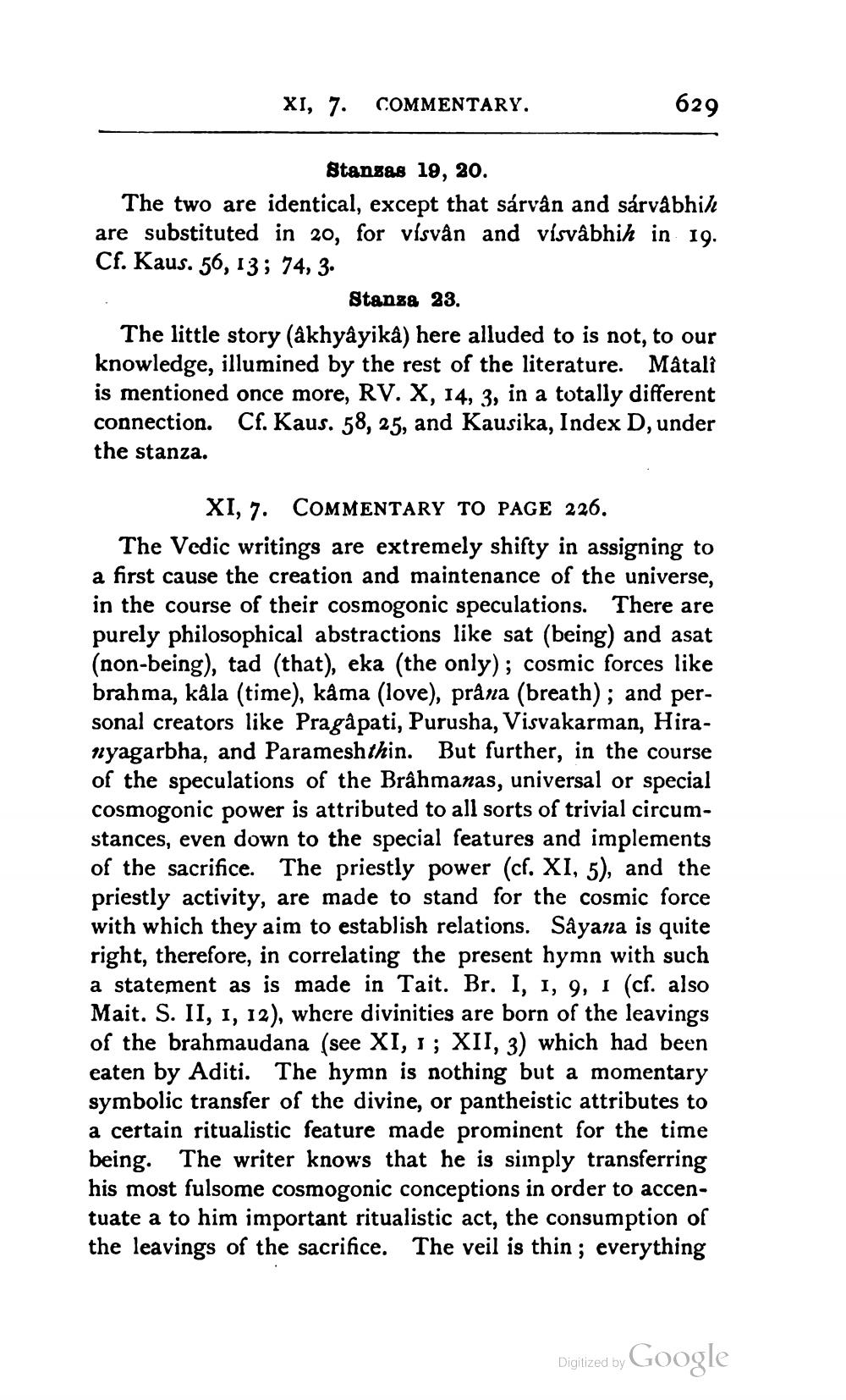________________
XI, 7. COMMENTARY.
629
Stangas 18, 20. The two are identical, except that sárvån and sárvabhih are substituted in 20, for vísvân and visvâbhih in 19. Cf. Kaus. 56, 13; 74, 3.
Stanza 23. The little story (akhyâyikå) here alluded to is not, to our knowledge, illumined by the rest of the literature. Matalî is mentioned once more, RV. X, 14, 3, in a totally different connection. Cf. Kaus. 58, 25, and Kausika, Index D, under the stanza.
XI, 7. COMMENTARY TO PAGE 226. The Vedic writings are extremely shifty in assigning to a first cause the creation and maintenance of the universe, in the course of their cosmogonic speculations. There are purely philosophical abstractions like sat (being) and asat (non-being), tad (that), eka (the only); cosmic forces like brahma, kåla (time), kama (love), prâna (breath); and personal creators like Pragâ pati, Purusha, Visvakarman, Hiranyagarbha, and Parameshthin. But further, in the course of the speculations of the Brâhmanas, universal or special cosmogonic power is attributed to all sorts of trivial circumstances, even down to the special features and implements of the sacrifice. The priestly power (cf. XI, 5), and the priestly activity, are made to stand for the cosmic force with which they aim to establish relations. Sâyana is quite right, therefore, in correlating the present hymn with such a statement as is made in Tait. Br. I, 1, 9, I (cf. also Mait. S. II, 1, 12), where divinities are born of the leavings of the brahmaudana (see XI, 1; XII, 3) which had been eaten by Aditi. The hymn is nothing but a momentary symbolic transfer of the divine, or pantheistic attributes to a certain ritualistic feature made prominent for the time being. The writer knows that he is simply transferring his most fulsome cosmogonic conceptions in order to accentuate a to him important ritualistic act, the consumption of the leavings of the sacrifice. The veil is thin; everything
Digized by Google




